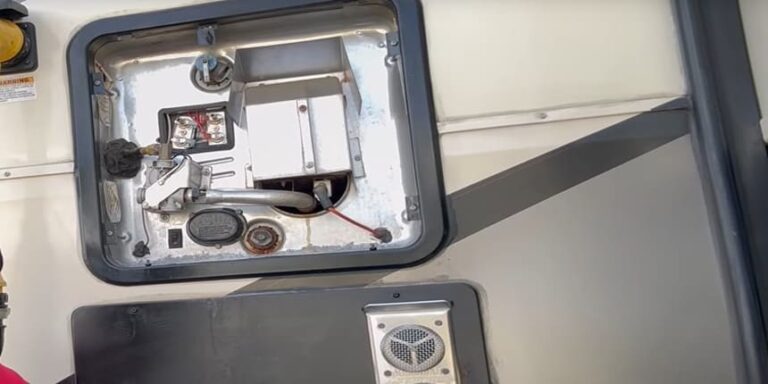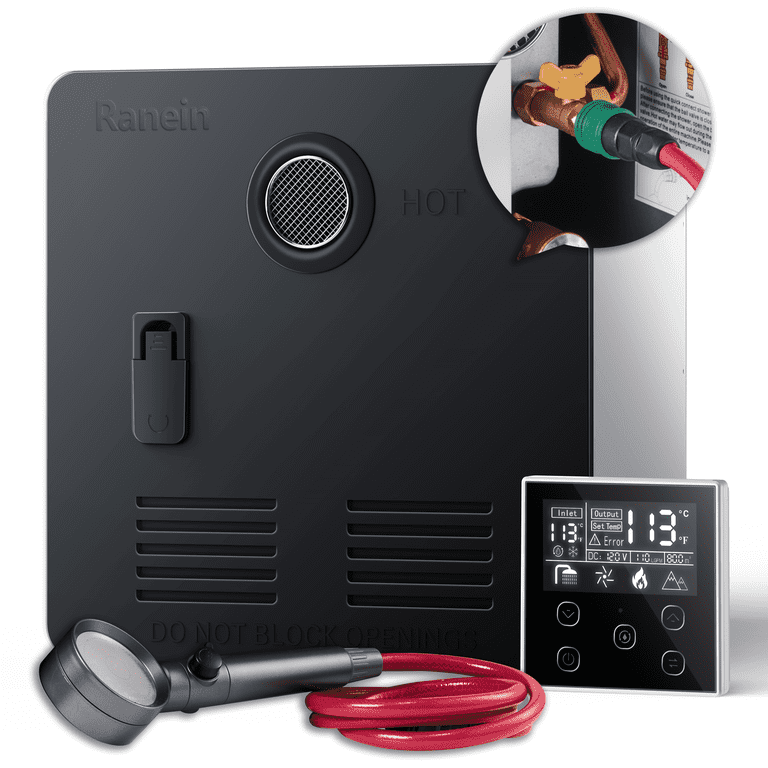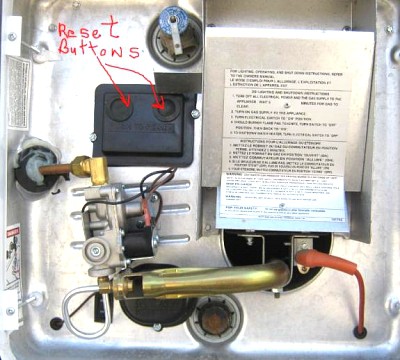Is your RV adventure being interrupted by a stubborn Atwood water heater? You’re not alone.
An unexpected cold shower or lack of hot water can quickly turn your travel experience into a frustrating ordeal. But before you consider costly repairs or replacements, take a deep breath. This guide is designed to help you troubleshoot common Atwood water heater problems with ease.
Imagine the relief of solving the issue on your own, regaining comfort, and getting back to what you love most – exploring the open road.
Let’s dive in and get your RV back to its cozy, hot water glory.
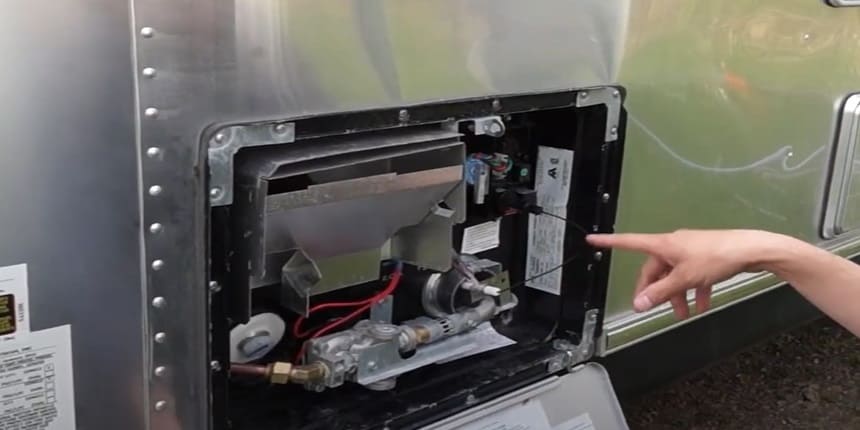
Common atwood rv water heater problems
Dealing with RV Atwood water heater problems can be frustrating. Knowing common issues helps fix problems quickly. This guide covers typical faults, offering simple solutions. Let’s explore the most frequent challenges you might face.
#1: No Hot Water
No hot water is a common issue with RV Atwood water heaters. Often, the cause is a faulty thermostat or heating element. Check if the thermostat is set correctly. Inspect the heating element for damage. Replace any broken parts to restore hot water.
#2: Water Heater Leaks
Leaks in your water heater can lead to bigger problems. Inspect connections and valves for tightness. Look for cracks in the tank. Replace worn-out seals and gaskets. Regular maintenance prevents leaks and extends your heater’s lifespan.
#3: Pilot Light Issues
Pilot light problems are frequent in gas water heaters. Check for blockages in the pilot tube. Ensure the thermocouple is working correctly. Clean any dirt around the pilot light. Replace faulty components to ensure it stays lit.
#4: Temperature Fluctuations
Temperature changes can be annoying. Often, they stem from a faulty thermostat or gas control. Verify the thermostat settings. Inspect the gas control valve for proper function. Adjust or replace components as needed. Stable temperature improves comfort.
Diagnostic Tools For atwood rv water heater troubleshooting
Rv Atwood water heater troubleshooting becomes manageable with the right diagnostic tools. Identify common issues quickly. Ensure optimal performance for your RV adventures.
When your RV’s Atwood water heater starts acting up, it can quickly dampen your adventurous spirit. Luckily, understanding and using the right diagnostic tools can make troubleshooting a breeze.
With a bit of patience and the right approach, you can get back to enjoying hot showers on the road. Here’s how you can use these essential diagnostic tools to identify and solve common problems.
1: Multimeter Testing
A multimeter is an invaluable tool for diagnosing electrical issues in your Atwood water heater. It measures voltage, current, and resistance, helping you pinpoint where the electrical circuit may be failing.
Start by setting your multimeter to the appropriate function. If the heater isn’t heating water, check the element for continuity. A broken element won’t show any continuity and needs replacing.
If you’ve ever felt the frustration of a cold shower after a long drive, you know that a quick check with a multimeter can save the day. Isn’t it fascinating how such a small device can hold so much power in getting your heater back on track?
2: Gas Pressure Gauge
When dealing with gas-powered Atwood water heaters, ensuring the right gas pressure is crucial.
A gas pressure gauge can help determine if the issue lies with the gas supply. Attach the gauge to the gas line and take a reading. If the pressure is too low, your heater won’t function efficiently.
Adjust the regulator or consult a professional if you’re unsure about handling gas components. Imagine the peace of mind knowing your heater’s gas pressure is just right. How often do we overlook these tiny details until they disrupt our comfort?
3: Visual Inspection
A simple visual inspection can uncover a lot. Sometimes, the problem is staring right at you. Look for any obvious signs of wear and tear.
Are there any loose connections or visible corrosion?
Examine the burner for clogs or debris that might obstruct performance. It’s like finding a hidden gem when you spot a loose wire that’s causing all the trouble.
Isn’t it satisfying to fix something with just your eyes and hands?
Each of these diagnostic tools provides you with insights into your Atwood water heater’s health.
Have you tried these methods before, or do you have a favorite tool that never lets you down?
Your journey to mastering RV maintenance begins with the right tools and a curious mind.
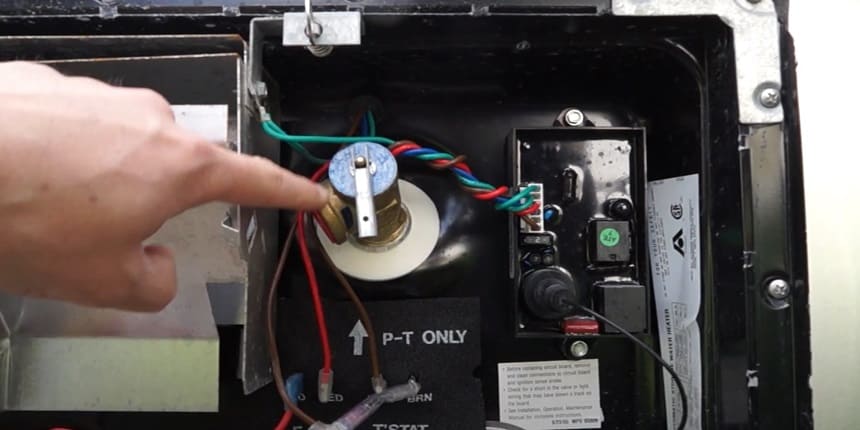
rv atwood water heater troubleshooting guide – Repair Techniques
Troubleshooting Atwood Rv water heater can seem daunting. But with the right techniques, it’s manageable. Each technique aims to restore your heater’s functionality. Improve your RV experience with these straightforward solutions.
#1: Cleaning Burner Assembly
The burner assembly often accumulates dirt and debris. This buildup affects the heater’s performance. First, turn off the gas supply.
Remove the burner from the heater. Use a soft brush to clean the burner. Ensure all ports are clear. Reinstall the burner once clean. Regular cleaning maintains efficiency.
#2: Replacing Thermostat
A faulty thermostat disrupts temperature control. Begin by turning off the power supply. Remove the old thermostat carefully. Install the new thermostat in its place.
Secure it properly to avoid loose connections. Test the heater to ensure proper functioning. This replacement restores optimal heating.
#3: Fixing Leaks
Leaks lead to significant water loss. Identify the leak source first. Tighten loose connections using a wrench. Replace damaged gaskets if necessary.
Always ensure fittings are secure. Test for leaks after repairs. A leak-free system conserves water and energy.
Safety Precautions
Ensure safety by turning off the RV’s power supply before inspecting the Atwood water heater.
Use gloves and goggles to protect yourself from hot surfaces and electrical components. Check for leaks and secure all connections to prevent accidents.
When you’re troubleshooting your RV Atwood water heater, safety should be your top priority. It’s easy to get caught up in the excitement of fixing an issue yourself, but neglecting safety can lead to serious consequences.
Before diving into the technical aspects, take a moment to ensure you’re protecting yourself and your RV.
Handling Gas Connections
Gas connections can be tricky, and a small mistake can lead to big problems. Always turn off the gas supply before you start any work. Double-check all connections for leaks using soapy water; bubbles mean trouble.
Consider using a gas leak detector for added peace of mind. It’s a small investment for potentially life-saving information. Remember, your nose is not a reliable gas detector.
Avoiding Electrical Hazards
Electricity and water don’t mix, and your RV water heater involves both. Make sure the power supply is turned off before you start troubleshooting. Use insulated tools to avoid accidental shocks.
Wearing rubber-soled shoes can provide an extra layer of protection. Think about the times when you felt a static shock; now imagine that on a larger scale. Better safe than sorry, right?
Proper Ventilation
Good ventilation is essential when working with gas appliances like your water heater. Make sure the area is well-ventilated to prevent the buildup of harmful gases.
Open windows and doors to let fresh air circulate. Have you ever felt dizzy or light-headed in a closed space? That’s often due to poor ventilation.
Keeping the air moving can prevent such discomfort and keep you safe. Safety might seem like a hassle, but it’s worth every precaution.
Wouldn’t you rather spend a little extra time ensuring your safety than dealing with the aftermath of an accident? Keep these precautions in mind, and you’ll be one step closer to a hassle-free RV adventure.
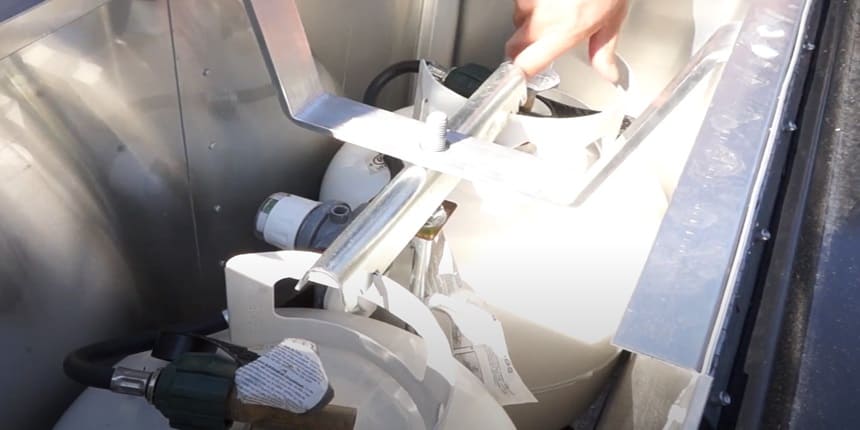
Maintenance Tips
Proper maintenance of your RV Atwood water heater ensures its longevity and efficiency. Regular upkeep prevents unexpected breakdowns and costly repairs.
By following a few simple tips, you can keep your water heater in top condition. This section will guide you through essential maintenance tasks that will save you time and money.
Regular Cleaning
A clean water heater operates more efficiently. Sediment buildup can lower heating performance. Use a soft brush to clean the exterior. Flush the tank periodically to remove deposits inside. Ensure all surfaces are free from dirt and grime.
Seasonal Checks
Perform checks at the start of each season. Inspect the heater for leaks or damage. Test the pressure relief valve for proper function. Check the anode rod, replacing it if worn. These checks prevent small issues from becoming big problems.
Parts Replacement
Replace worn-out parts promptly. Monitor the thermostat for signs of failure. Ensure burner assembly is working efficiently. Regularly check electrical connections for corrosion. Replacing faulty parts ensures the heater works reliably.
Expert Advice About atwood hot water heater problems
When your RV Atwood water heater starts acting up, expert advice can make all the difference between a minor hiccup and a full-blown disaster.
Whether you’re facing inconsistent heating or strange noises, understanding when to call in the pros, considering upgrades, and focusing on long-term solutions can save you time and money. Let’s dive into some expert advice to keep your water heater running smoothly.
When To Call A Professional
There are moments when DIY troubleshooting isn’t enough. If you’ve tried basic fixes like resetting the heater or checking the power supply and the issue persists, it might be time to reach out for help.
Professionals have the tools and experience to diagnose problems quickly. For example, a persistent leak could indicate a deeper issue that requires specialized attention. Safety concerns, like gas leaks or electrical faults, should never be handled solo. Your safety comes first.
Ask yourself: Are you comfortable with the technical aspects of your water heater? If not, dialing a professional might be your best bet.
Upgrading Components
Sometimes, older components just can’t keep up. If your water heater is lagging in performance, consider upgrading parts like the thermostat or heating element. Newer models often offer improved efficiency and reliability.
For example, swapping out an old thermostat for a digital one can provide more precise temperature control, reducing energy waste. This not only saves money but also enhances comfort during your travels.
Think about it: Could an upgrade be the key to unlocking better performance from your water heater?
Long-term atwood hot water heater troubleshooting Solutions
Quick fixes are tempting, but long-term solutions ensure peace of mind. Regular maintenance, such as flushing the system to remove sediment build-up, can extend the lifespan of your water heater.
Investing in a quality cover for your heater can protect it from weather-related damage, reducing wear and tear. Simple actions, like adjusting water usage and temperature settings, can prevent overworking the system.
Consider this: What steps can you take today to ensure your water heater stays reliable tomorrow?
In your RV adventures, a well-functioning water heater is essential. By knowing when to seek professional help, considering upgrades, and implementing long-term solutions, you ensure a worry-free journey. Keep these expert insights in mind, and you’ll be ready for whatever the road throws your way.
How Do I Reset My Atwood Water Heater?
To reset your Atwood water heater, locate the reset button on the control panel. Press and hold it for a few seconds until you hear a click.
This action resets the heater, and it should function normally. If issues persist, consult the user manual or contact a professional.
Why Is My Atwood Water Heater Not Igniting?
If your Atwood water heater isn’t igniting, check the propane supply and ensure it’s turned on. Inspect the igniter for any dirt or damage.
A faulty thermostat or a clogged burner could also cause ignition problems. Regular maintenance can prevent these issues.
What Causes Atwood Water Heater To Leak?
Leaks in an Atwood water heater can result from loose connections or damaged parts. Inspect valves and fittings for tightness.
Check for cracks in the tank or worn-out seals. Regular inspection and maintenance can help prevent leaks, ensuring your heater functions efficiently.
How Do I Maintain My Atwood Water Heater?
Maintaining your Atwood water heater involves regular checks and cleaning. Inspect and clean the burner and ignition system.
Flush the tank periodically to remove sediment build-up. Ensure all connections are tight and free from leaks. Regular maintenance prolongs the heater’s lifespan and improves efficiency.
Verdict
Fixing your RV Atwood water heater doesn’t have to be hard. Understand common issues. Check connections and parts. Test the thermostat regularly. Ensure the heater gets power. Replace faulty components. Keep the unit clean and maintained. Troubleshoot step by step.
Each step helps solve problems. A working heater enhances your RV experience. Enjoy hot water on trips. Stay safe and comfortable. Regular checks can prevent future issues. Your RV adventures will be more enjoyable. Remember, patience is key. Happy travels with a reliable water heater!

